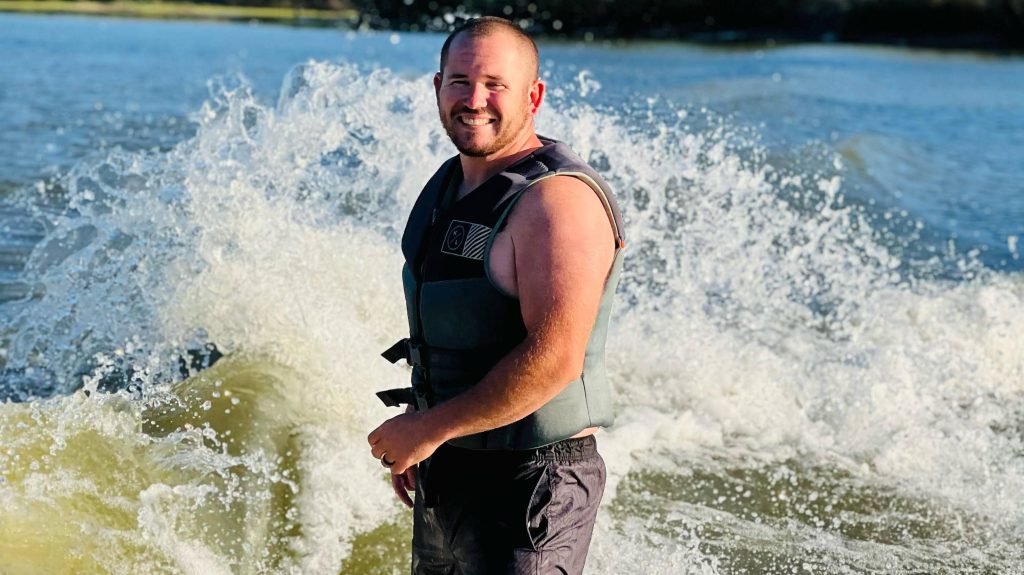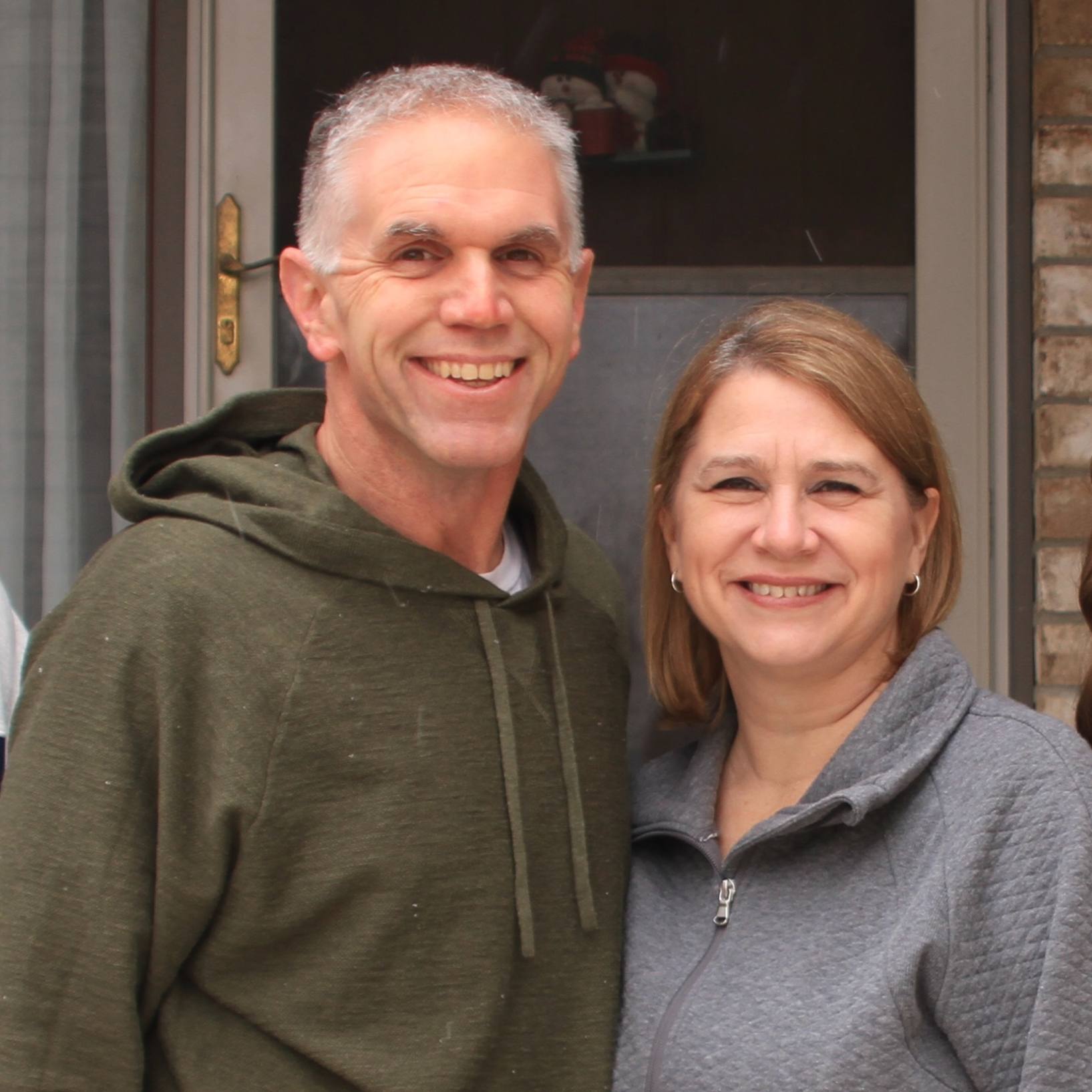-
Cardiovascular
In the wake of thoracic outlet syndrome, an outdoors enthusiast triumphs

Johnathan Sederquist isn’t interested in taking it easy. The active 29-year-old likes to work out early in the morning, do landscaping and excavation work for his company during the day, and tackle home improvement projects — like building a new house on the banks of the Hiwassee River — in his free time. He also loves spending time on the river, water surfing behind his boat or riding one of his two Jet Skis, with his friends and family.
When nerve pain started disrupting Johnathan’s on-the-go personality, he didn’t know what to do about it.
Johnathan first noticed tingling and numbness in his hands about seven years ago, while painting his daughter's nursery before she was born.
"My hand would go numb, and I'd drop the paintbrush," Johnathan says.
While driving, Johnathan also noticed cramping and a burning sensation in his hands. And he frequently lost circulation in his arms. "They'd go limp while I was trying to sleep," he says.
Still, Johnathan largely ignored the symptoms, attributing them to arthritis or carpal tunnel syndrome.
Eventually, Johnathan saw a doctor near his home in Calhoun, Tennessee, who found a cyst near his spine.
"The doctor told me the cyst was causing my symptoms, and that after I had surgery to remove the cyst, I'd feel like a new man," he recalls.
That’s not what happened though. Johnathan still experienced pain even after the surgery. So much so, that, one night a short time later, he decided he couldn't live with it anymore. "I told Mackenzie, my wife, that I had to find a new doctor," he says. "I had to get help."
A second opinion
Johnathan's friend knew someone who worked for Mayo Clinic. Johnathan reached out to the contact, who suggested Johnathan schedule an appointment at Mayo Clinic in Florida, which was the closest Mayo campus to his home. When it was time to travel to Florida, Johnathan didn't hesitate.
"They ran tests and figured out it was thoracic outlet syndrome," he says. Thoracic outlet syndrome, or TOS, is a rare disorder that involves compression of the nerves, arteries or veins in the lower neck and upper chest.
It turned out he had bilateral TOS — meaning it occurred on both his left and right side.
Diagnosing TOS is key to treating it successfully, says Dr. Sam Farres, chief of the Vascular Surgery Division at Mayo Clinic in Florida. But diagnosing TOS is about much more than just running one test. It's about eliminating other possible causes first.
"TOS is complicated because it's a spectrum of symptoms that are, often, very generic," Dr. Farres says. "And TOS is very rare. That's why we have a protocol we follow, to minimize bias and subjectivity, before we diagnose someone with the syndrome."
With Johnathan, Dr. Farres first tried conservative treatments, like physical therapy. When those didn't effectively reduce the pain though, Dr. Farres recommended a TOS procedure called rib resection surgery. Since TOS affected both sides of his body, he required two surgeries, which were spaced apart to allow time for healing.
"Dr. Farres and everyone on his team were great," Johnathan says. "They were willing to keep going and keep checking everything."
Free from TOS
Johnathan had the surgeries a month apart. After the first one, he recalls waking up from the procedure in less pain than he had going into it. "I kept telling the doctor and my wife that it felt like I could move my neck easier," he says. "I felt like I could almost turn my head around like an elk. One side of my body felt completely different from the other side."
Just 10 days after his first surgery, in fact, Johnathan started running again. "It didn’t hurt," he says.
In between his surgeries and follow-up appointments, Johnathan kept in touch with his care team on Mayo Clinic's patient portal, always receiving quick responses to his questions.
"Dr. Farres would call and check on me," he says. "They did a great job of keeping up with how I was doing. Now, I’ll never go anywhere else but Mayo Clinic."
Today, Johnathan is still running and back in the gym. And he’s spending more time on the river with Mackenzie and their daughter, Kendall, who's now 6 years old.
"The pain and burning in my hands are gone," he says.
Dr. Farres says Johnathan and other patients like him describe the before-and-after difference as a "huge burden" being lifted from their shoulders. "You can tell that, for Johnathan, work is his life, so it hit him hard not being able to lift or remodel or do the things he wanted to do," Dr. Farres says. "Now, I think Johnathan feels free to live his life to its fullest potential. He's telling me all the things he's doing. It's very exciting."
Additional Resources:
- Casting once again: Patient recovers from thoracic outlet syndrome and rediscovers thrill of being on the water
- Judy's story







